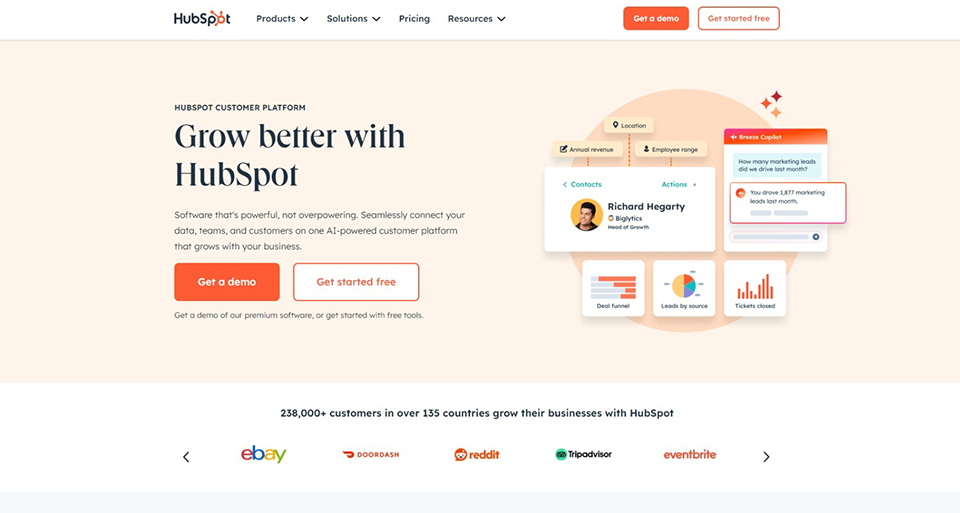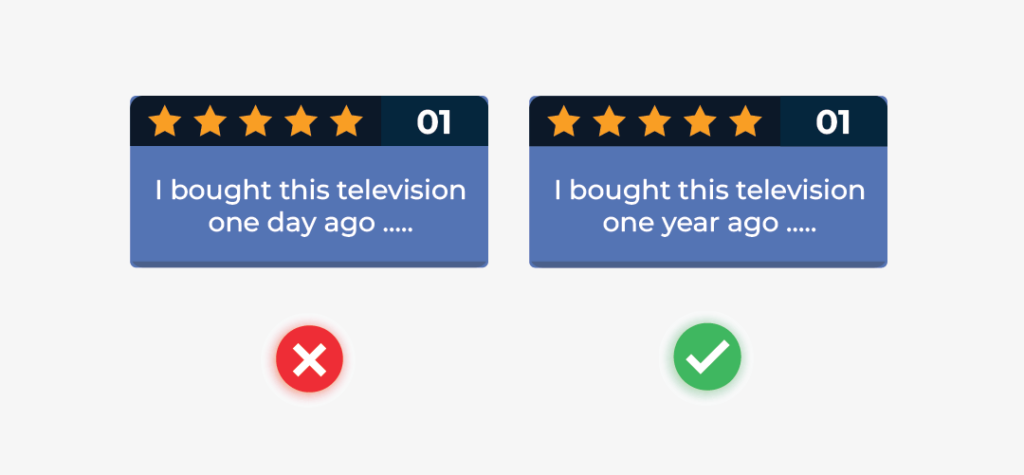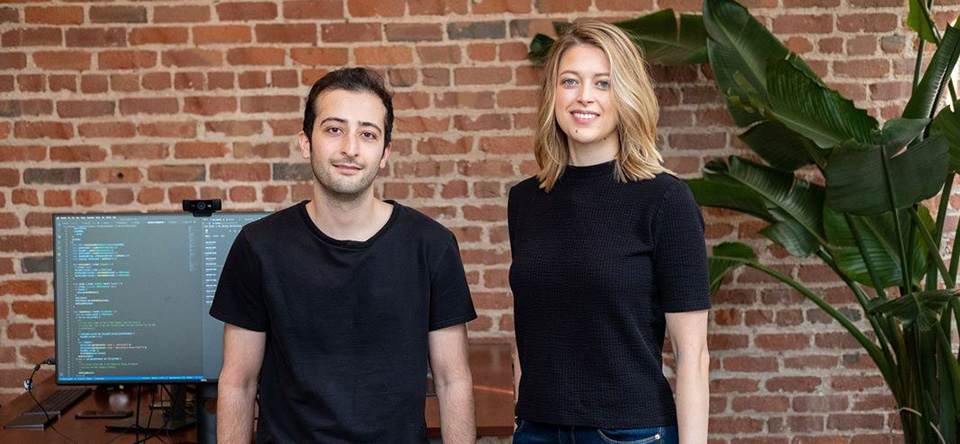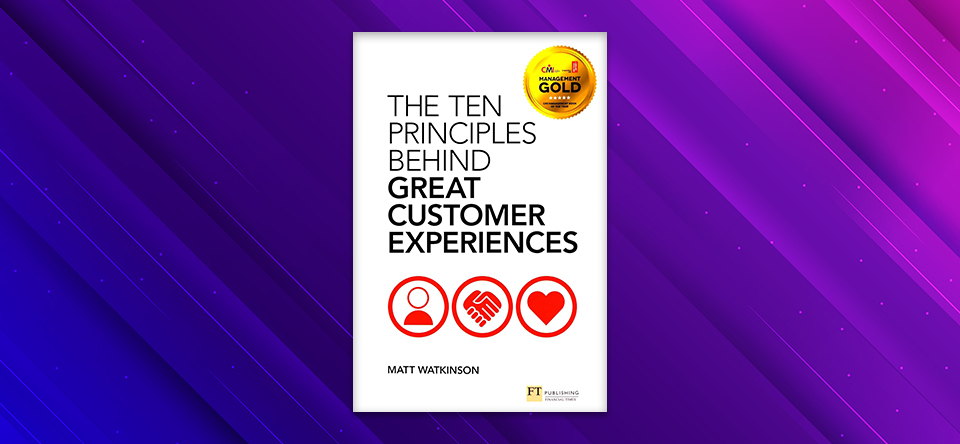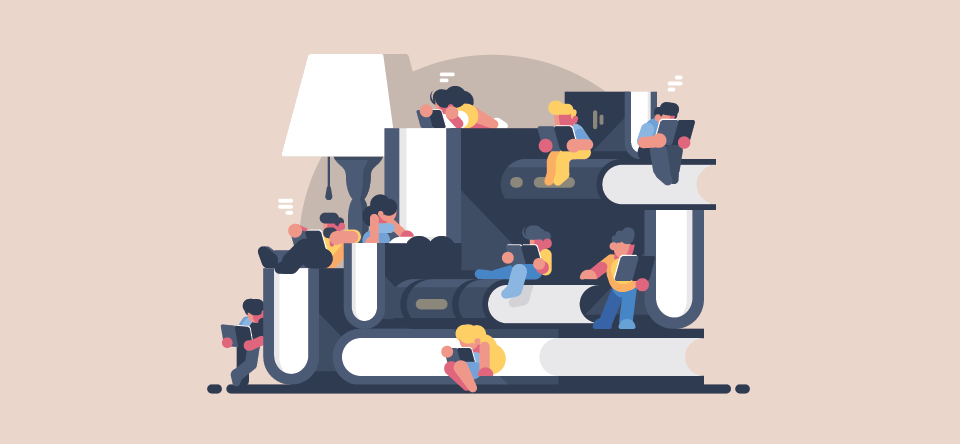We also talk about the ten principles behind great customer experiences and when asking for reviews does more harm than good.
Driving traffic to your website is only half the battle. Converting those visitors into customers is the real challenge. One of the most effective tools for doing this is social proof. ✨
According to one study, 90% of customers read reviews before making a purchase. That’s why almost every business adds testimonials and client logos to their website.
But most businesses place them in the wrong spot – at the bottom of the page or on a separate review page.
That was also the case for the HubSpot website. Their customer logos and testimonials were tucked away at the bottom of their landing pages. Heat maps showed that only 50% of visitors scrolled far enough to see them. 🔍
But even with limited visibility, those elements were the second and third most-clicked items on their landing pages.
🧪 So they decided to run an A/B test. In the updated version, they displayed the customer logos at the top of the page, just below the hero banner. The written testimonials stayed near the bottom.
This small change resulted in a 19.5% increase in software signups! 🤯
If you have a website with social proof buried near the bottom of the page, consider doing the same test. It could make a big impact on your conversions.
Reviews are a powerful way to showcase your product’s value and attract new customers. But what’s the best way to collect reviews?
One common advice is to strike while the iron is hot. Ask for a review right after a purchase. The idea is that customers are more likely to respond when the experience is fresh.
🔬 Researchers ran ten experiments and found that:
– This perceived lack of experience makes the review seem less informed and reliable.
⭐ Here’s how you can make customer reviews more persuasive:
– Wait to ask for reviews until customers have had sufficient time to use the product.
– Encourage them to mention how long they’ve been using the product in their reviews.
– If the reviews are on your website, highlight how long ago the reviewer purchased the product
✋ Careful: This effect only applies to long-term-use products, not to perishable items like food.
Acquiring the first few paying customers is the hardest challenge for any business. It’s almost impossible if you don’t have a marketing budget.
📋 She broke down the acquisition journey into three phases.
OpenPhone needed to get their product in front of target customers for free. So Kulya began with Facebook Groups. There are FB groups for everything. She joined 60 groups targeting industries like real estate, massage therapy, and eCommerce.
🗣️ She posted about the product, seeking beta users. The results were mixed. Some posts performed well, some received no engagement, and some even got her banned from the groups.
However, she managed to attract a decent number of beta users. She began engaging with them regularly to improve the product.
The beta users were helpful. But the company wasn’t yet generating any revenue. So they decided to convert the beta users to paid customers. They announced that the beta program was ending soon and offered continued access for $10/month. 60 users signed up.
But their success with FB Groups was tapering off. So Kulya turned to Reddit. Reddit also has tons of communities for small business owners, startups, and entrepreneurs. Instead of directly marketing, she shared her story, explained the purpose behind OpenPhone, and requested feedback. ✍️
The response was overwhelmingly positive. She brought in a significant number of new customers.
To keep acquiring customers, Kulya needed a scalable customer acquisition strategy. So she turned to cold email. But with a targeted approach. Instead of sending mass emails, she identified companies with phone numbers on their websites. Then she sent them a simple email explaining OpenPhone’s benefits. 📩
This personalized strategy proved highly effective.
One key takeaway? The importance of cultivating personal relationships with customers. We are more likely to buy from a friend than a stranger.
“Every now and then I am reminded just how basic the mechanics of business really are. As a case in point, my friend Ben called me a couple of years ago. He said he’d just got off the phone with a lovely woman who’d been really helpful sorting out his car insurance. He said I should give her a call; she might be able to sort me out too. I instantly forgot. A week later, he called me again to say he’d spoken to her again; she had a name now – Sarah Jayne – and again he said I should call her. He’d clearly made a new friend.
“A week or so later, I did call her. It was immediately after yet another infuriating encounter with my then insurance provider. I’d spent forever being passed around various departments, waiting on hold and talking to mandroids who could only tell me what their computers told them. True to Ben’s word, she really was lovely: friendly, warm, polite and interested. For a moment I thought I’d entered a strange parallel universe: here I was, applying for insurance over the phone, not wanting to k*ll myself. I was actually enjoying it.
“Let’s fast forward to today: Ben has his car and household contents insured with her. I have both cars and my house contents insured with her. I have told everyone in the known universe (known to me that is) about how good she is to deal with.”
“A warm welcome by attentive, charismatic staff stands out like a beautiful, handwritten letter in a sea of junk mail, and one moment of outstanding personal service can leave an indelible impression on a customer. I’ve collected great examples from friends over the years, probably my favourite is a friend’s mother who is still raving about a bank clerk who paid a home visit when she was taken ill over 50 years ago.
“There is much to be gained by adding a personal touch to the customer experience. Whether it’s just remembering a customer’s name, building a genuine friendship, or catering for an unusual request. In a world where we are often treated like digits and feel dwarfed by the size of the enterprise, to be treated as an individual is truly refreshing. This is easier than ever with social media services like Facebook and Twitter. Ask yourself ‘How can we add a personal touch to the experience?”
“It is far easier to be loyal to a person than to a brand: we place more trust in those we have a personal relationship with, and more readily buy from a friend than a stranger. Would you rather get your morning coffee from the shop where they greet you as a friend and know your order before you ask, or the one where they don’t even say hello? It is unlikely that my friend Ben and I will buy insurance from anyone but SJ even if it’s cheaper. Likewise with my business bank. I know the manager and have done for years. When I need something I can just call, text or e-mail them and it’s taken care of.”

